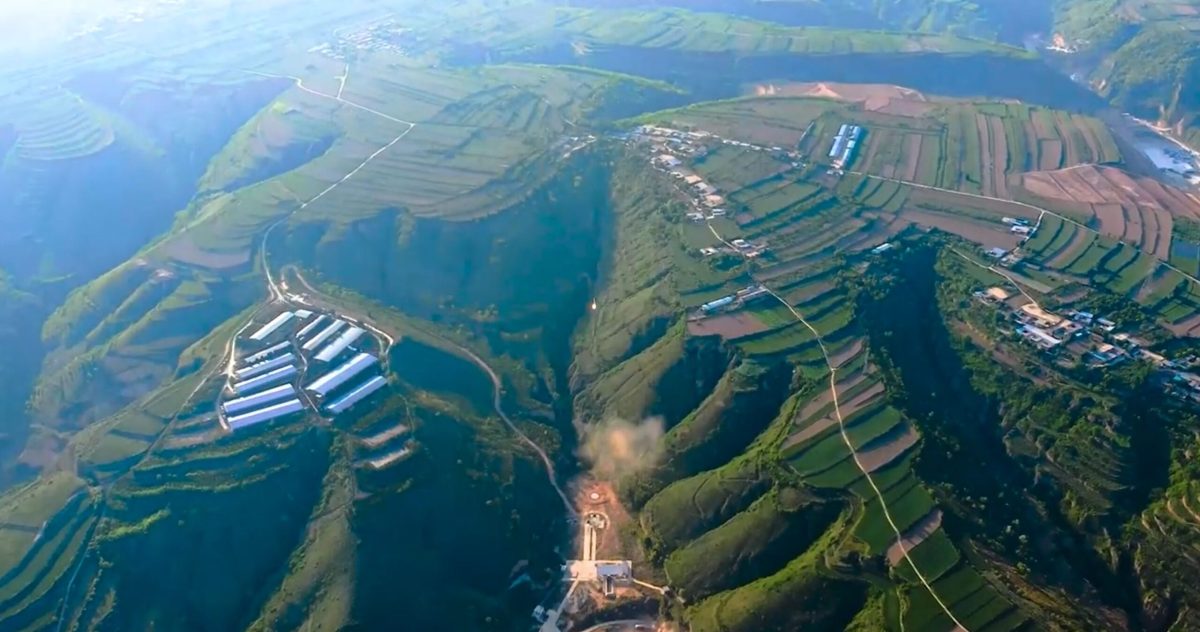HELSINKI — Chinese rocket company Deep Blue Aerospace has secured new funding for its reusable rocket plans, with its first launch set for later this year.
The company recently completed B and B1 funding rounds that raised hundreds of millions of yuan (tens of millions of dollars). This will inject “strong momentum into the development of reusable rockets,” the company said in a statement.
Deep Blue Aerospace plans to launch its first Nebula-1 rocket from a new commercial spaceport at Wenchang, Hainan island, before the end of the year. It will also attempt to land the rocket’s first stage, using retropropulsion and landing legs. It is likely to be China’s first attempt at launching and landing an orbital rocket.
The company performed a successful kilometer-level rocket launch and landing test in May 2022. It is currently working towards a vertical takeoff, vertical landing (VTVL) test with the first stage of the Nebula-1 before the end of June.
The Nebula-1 is a two-stage, 3.35-meter-diameter launcher. The kerosene-liquid oxygen-fueled rocket will use nine variable thrust, 3D-printed Thunder-R1 engines on its first stage, and a single engine on the second. It will be capable of carrying 2,000 kilograms to low Earth orbit (LEO) while an improved version will be able to lift 8,000 kilograms to LEO.
Deep Blue Aerospace is also working on a larger Nebula-2 rocket. That will be capable of sending 20,000 kilograms of payload to LEO.
The capacity of planned Chinese commercial launchers has greatly increased in the past few years. This has been largely driven by the adoption of a national plan to construct a 10,000-plus-satellite megaconstellation in 2021.
China’s central government has since cited commercial space as an important future industry. Cities and provinces are now drawing up and enacting policies to support growth and innovation in the sector. Commercial space will play a key role in constructing planned megaconstellations.
The new commercial spaceport at Wenchang is to help ease a bottleneck in launch and access to spaceports. A large increase in launch rate will be needed for China to construct new constellations. China’s launch activity has already exploded in recent years, before considering the new constellation plans.
China has filed plans for three constellations of 10,000 or more satellites. These are Guowang, G60 Starlink and a newly-filed Honghu constellation.
Deep Blue Aerospace’s latest funding is no surprise in the context of China’s plans for growing commercial space. However, Deep Blue Aerospace faces competition from a number of other commercial and state-linked firms.
Landspace, with the methane-liquid oxygen Zhuque-2 and planned stainless steel Zhuque-3, Space Pioneer with the kerosene-fueled Tianlong-3, Galactic Energy (Pallas-1) and iSpace (Hyperbola series) are among companies working on reusable rockets.
CompanyRocket NameRocket TypeKey Features/NotesiSpaceHyperbola-3Methane-liquid oxygen Payload capacity of 8,500 kg to Low Earth Orbit (LEO); first flight planned for 2025.LandspaceZhuque-3Methalox Payload capacity up to 21,000 kg to LEO. Stainless steel. first flight planned for 2025.Galactic EnergyPallas-1Kerosene-liquid oxygen Payload capacity of 5,000 kg to LEO, or 3,000 kg to a 700 km sun-synchronous orbit (SSO).CAS SpaceKinetica 2KeroloxPayload capacity of 7,800 kg to 500 km SSO.Deep Blue AerospaceNebula-1KeroloxPayload capacity of 1,000 kg to 500 km SSO; 2,000 kg to LEO. First flight planned in late 2024.Space PioneerTianlong-3KeroloxComparable to Falcon 9 in launch capability; plans for a reusable first stage.Space EpochXZY-1Methalox7,000 kg to 1,100 km. Stainless steel. First flight in 2025.OrienspaceGravity-2Kerolox25,600 kg to LEO. First flight in 2025; plans for a reusable first stage.CASCVariousVariousWorking on reusable rockets including a new-generation human-rated launcher, spaceplane, and Long March 9 super heavy-lift launcher.Non-exhaustive list of planned Chinese reusable rockets (Credit: Andrew Jones/SpaceNews).
